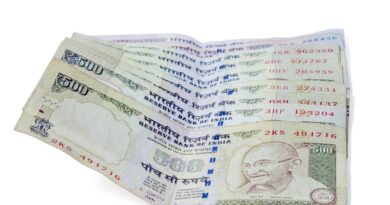Maximizing Profits: The Ultimate Guide to Investing in Precious Metals
Maximizing Profits: The Ultimate Guide to Investing in Precious Metals
Introduction
Investing in precious metals is a popular strategy for diversifying investment portfolios and protecting against inflation. Precious metals such as gold, silver, platinum, and palladium have been considered safe-haven assets for centuries, offering a store of value and a hedge against economic uncertainty. In this article, we will explore the various ways to invest in precious metals and provide strategies for maximizing profits.
Understanding the Different Precious Metals
Before diving into the world of precious metal investing, it’s important to understand the differences between each metal and their unique characteristics.
Gold: Gold is often seen as the ultimate store of value and a safe-haven asset during times of economic turmoil. It is a popular investment choice for investors looking to hedge against inflation and currency devaluation.
Silver: Silver is a more affordable alternative to gold and is often used for industrial purposes as well as for investment. It has historically been more volatile than gold but can offer significant upside potential.
Platinum: Platinum is a rare and valuable metal that is used mainly in the automotive industry for catalytic converters. It is also considered a precious metal and is used for investment purposes.
Palladium: Palladium is a rare metal that is primarily used in the automotive industry, particularly in catalytic converters. It has gained popularity as an investment metal in recent years due to its increasing demand and limited supply.
Different Ways to Invest in Precious Metals
Physical Bullion: One of the most common ways to invest in precious metals is by purchasing physical bullion. This can include coins, bars, and rounds made of gold, silver, platinum, or palladium. Investors can purchase bullion from reputable dealers or online platforms and store them in a secure location.
Exchange-Traded Funds (ETFs): Another popular way to invest in precious metals is through ETFs that track the prices of metals such as gold, silver, platinum, and palladium. These funds offer easy and cost-effective access to the metals market without the need for physical storage.
Mining Stocks: Investing in mining stocks can also be a way to gain exposure to the precious metals market. Mining companies that produce gold, silver, platinum, or palladium can offer leverage to the metal prices and potential dividends for investors.
Derivatives: For more advanced investors, derivatives such as futures and options can be used to speculate on the prices of precious metals. These financial instruments allow investors to profit from price movements without owning the actual metal.
Strategies for Maximizing Profits
Diversification: One of the key principles of investing in precious metals is diversification. By spreading investments across different metals, sectors, and asset classes, investors can reduce risk and maximize returns. Diversifying holdings can help protect against extreme price fluctuations in any one metal and provide a more balanced portfolio.
Timing the Market: Timing the market is another important strategy for maximizing profits in precious metals. By monitoring economic indicators, geopolitical events, and market trends, investors can make informed decisions about when to buy or sell metals. Buying during periods of low prices and selling during high prices can help investors capitalize on market movements.
Long-Term Perspective: Investing in precious metals should be viewed as a long-term strategy rather than a short-term speculation. Metals prices can be volatile in the short term, but historically they have appreciated over the long term. Holding onto investments for several years or decades can provide significant returns and protect against inflation.
Risk Management: As with any investment, risk management is essential when investing in precious metals. Setting stop-loss orders, using trailing stops, and diversifying holdings can help protect against downside risk and minimize losses. It’s important to have a clear investment plan and stick to it, even during periods of market volatility.
Conclusion
Investing in precious metals can be a rewarding strategy for maximizing profits and diversifying investment portfolios. By understanding the different metals, exploring various investment options, and implementing sound strategies, investors can capitalize on the potential benefits of precious metal investing. Whether you choose to invest in physical bullion, ETFs, mining stocks, or derivatives, it’s important to approach investing in precious metals with a long-term perspective and a well-defined risk management plan. By following these principles, investors can navigate the precious metals market with confidence and potentially achieve significant returns.





